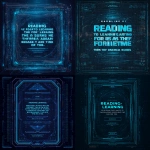Explore the Best AI Image Gallery

AI: The Artists New Muse - Revolutionizing Graphic Design
The world of graphic design is undergoing a profound transformation, driven by the rapid advancements in artificial intelligence (AI). No longer confined to science fiction, AI is becoming an indispensable tool for designers, automating tasks, generating creative concepts, and pushing the boundaries of what’s possible. This revolution brings both exciting opportunities and complex ethical considerations that demand careful attention.
AI: A Helping Hand in Design
AI algorithms can now perform a wide range of design tasks, from generating logos and marketing materials to creating website layouts and even composing typography. These tools free up designers from tedious, repetitive work, allowing them to focus on higher-level creative endeavors.
- Logo Design: AI can analyze trends and generate multiple logo concepts based on specific requirements, providing designers with a starting point for further refinement.
- Marketing Materials: AI-powered platforms can create compelling social media posts, email campaigns, and even video scripts, adapting content to target audiences and optimizing for engagement.
- Website Design: AI can suggest layout structures, color schemes, and font pairings that enhance user experience and visual appeal, streamlining the web design process.
- Typography Generation: AI algorithms can create unique fonts based on specific styles or themes, adding a personalized touch to designs.
AI as a Creative Catalyst
Beyond automation, AI has the potential to serve as a true creative catalyst, inspiring designers with novel ideas and pushing the boundaries of artistic expression.
- Idea Generation: AI can analyze vast datasets of design trends, user preferences, and cultural influences to suggest unexpected combinations and generate original concepts.
- Style Exploration: Designers can experiment with different AI-powered styles, blending genres, and creating unique visual aesthetics.
- Interactive Design: AI can enable dynamic, responsive design elements that adapt to user input, creating engaging and personalized experiences.
Ethical Considerations in AI-Powered Design
The integration of AI into graphic design raises important ethical considerations that must be addressed:
- Bias and Fairness: AI algorithms are trained on existing data, which can reflect societal biases. It’s crucial to ensure that AI-generated designs are inclusive and equitable, avoiding the perpetuation of stereotypes or discrimination.
- Transparency and Accountability: The decision-making processes of AI algorithms can be opaque. It’s essential to develop transparent and explainable AI systems so designers can understand how designs are generated and identify potential biases.
- Copyright and Ownership: When AI creates original content, questions arise about copyright ownership and intellectual property rights. Legal frameworks need to evolve to address these new challenges.
The Future of AI in Graphic Design
The future of graphic design is deeply intertwined with the continued evolution of AI. We can anticipate:
- More Powerful and Specialized AI Tools: AI algorithms will become increasingly sophisticated, capable of handling more complex design tasks and catering to specific industry needs.
- Human-AI Collaboration:** Designers will work alongside AI as creative partners, leveraging AI’s strengths for automation and ideation while retaining their human touch for strategic vision and emotional intelligence.
- Emergence of New Design Disciplines: AI will pave the way for entirely new design fields, blurring the lines between art, technology, and data.
AI is transforming graphic design, empowering designers with unprecedented tools and possibilities. By embracing this technological revolution responsibly, we can unlock a future where creativity flourishes and innovation knows no bounds.
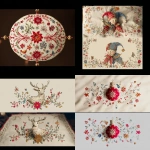
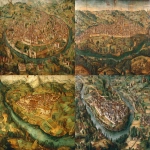

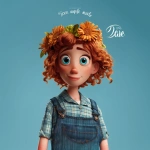

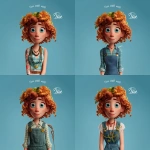

](https://images.ai-img.art/thumbnails/150/26c16e4f635deee86633de398088ca98d9bb748d6e7601436b07e882fab236cb.webp)

](https://images.ai-img.art/thumbnails/150/e6a179db327f0374ec327d0fdab48ac1f2dc47123eed103b0a41ed346280d07d.webp)
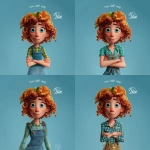

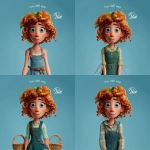


](https://images.ai-img.art/thumbnails/150/184b4b030e30be0a6d51b544226cb4cf2271977814d935d3aaa2b7529355b3b7.webp)



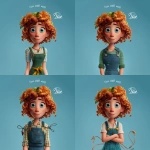





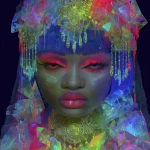
](https://images.ai-img.art/thumbnails/150/1202074d0d60b08b64d0f91f36468608aaac200a02b721cc8e6d8ec8a908432c.webp)

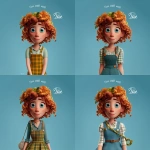
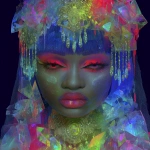


](https://images.ai-img.art/thumbnails/150/655229c40961cb7ff5abd4b4190e02c94ea1a961106e7547a562649c945268be.webp)






](https://images.ai-img.art/thumbnails/150/6c909fd6d38caac6572b592dd97831deb7d6562bba142798574677582676dfc1.webp)
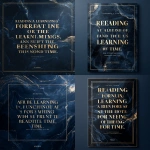




](https://images.ai-img.art/thumbnails/150/60973df1d727dbbf8e6922b7e4836814ab6012106eb9dcfe99aea7aec15f3710.webp)
